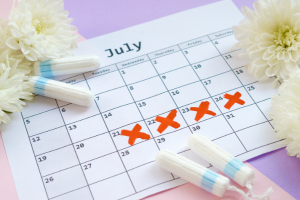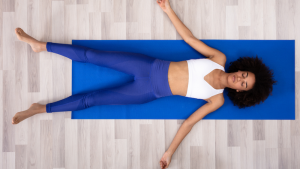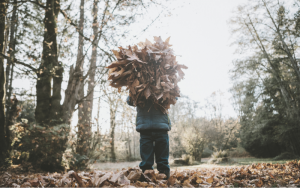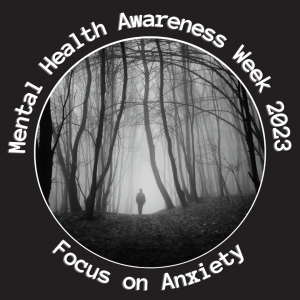Sitting below the sacrum at the lowest part of the spine is the coccyx, also known as the tailbone. It is a small triangular bone resembling a shortened tail and made up of 3 to 5 spinal bones or coccygeal vertebrae with disc-like ligaments.
Doctors used to believe the coccyx is always fused or semi-fused, but now know there is limited movement between the bones permitted by fibrous joints and ligaments. Injuries are common, often resulting from slips trips or falls or during childbirth.
The function of the coccyx
- Although the tailbone is no longer necessary in the human body, it stills has roles in the pelvis along with the sitting bones (ischial tuberoses) it provides support bearing weight in sitting.
- The coccyx provides an attachment point for many pelvic floor muscles; the muscles support the contents of the pelvis, including the anus, and vagina in women.
- When we sit or stand the bones that make up the pelvis including the coccyx rotate outward and inward to better support and balance the body. The coccyx usually moves slightly forward or backwards as the pelvis, hips, and legs move.
What is coccyx pain
Coccydynia is the medical name for coccyx or tailbone pain, but it’s also known as coccygeal pain. It results from damage to the bones or the surrounding tissues becoming inflamed, the discomfort or pain at the base of the spine is noticeable when sitting down or getting up from a seated position.

Symptoms
People with coccydynia often describe a dull achy pain and tenderness at the tip of the tailbone, deep between the buttocks above the anus sitting often worsens coccyx pain.
Sometimes, depending on the cause symptoms may also include muscle weakness, loss of sensation, digestive discomfort, including pain in the rectum.
Who gets it, are you at risk?
There are several common risk factors including:
Being female
- Coccydynia is much more common in women because their pelvic anatomy means they are more likely to place weight on the coccyx when sitting leaving it more susceptible to injury.
- Pregnancy and childbirth are the most common causes of coccyx pain in women, during pregnancy and labour, the pelvis including the sacrum and coccyx become more flexible, to allow movement during the delivery if the muscles and ligaments around the coccyx become overstretched and irritated resulting in postnatal discomfort and pain.
- Pelvic floor muscles dysfunction can also result in coccyx pain.
Trauma
People can injure their coccyx from an impact on a hard surface or trauma to the to the base of the spine, for example, skiing, skateboarding, and horse riding are repetitive sports with high risks of falls. And any slip or trip falling backwards on to one’s bottom can injure it. In most cases, this results in bruising, but it’s possible to dislocate one joint in the coccyx or sustain a fracture.
Sports people
Some sporting activities can put people at risk of a repetitive strain injury (RSI); for example; rowing, cycling horse riding. But, any sport or activity that involves putting pressure on or involves continual motion of stretching the base of the spine or leaning forward can strain the muscles and ligaments around the sacrum and the coccyx.

Poor sitting posture
Sitting on a hard chair or with added weight on your lap such a child or heavy bag can put increased pressure on the coccyx. Also, slumping in chairs, sofas or car seats, and sitting in awkward positions, and being seated for extended periods can also be an irritation the bones and surrounding tissues.

Weight
Coccydynia is a risk for people who are very slim or underweight as they may not have enough buttock muscles or fat to protect their coccyx from friction or rubbing.
Being overweight or obese can also place excess pressure on the coccyx when sitting down, and result in coccydynia or make an existing condition worse.
Degeneration or osteoarthritis
Trauma-related degeneration or age-related spinal osteoarthritis can also affect the bones of the coccyx, and the discs that help hold the coccyx in place. This can create extra pressure on the coccyx and result in pain.
Infection
Although rare coccyx pain can be the sign of a disease in the base of the spine or the soft tissues surrounding it.
Diagnosis & Treatment
- An examination of the tailbone area may be offered to check for any visible bruises. Sometimes an internal examination is needed to check the bones, this is done through the rectum.
- X-rays and MRI scans may be needed to rule out some of the more serious conditions.
- A tailbone injury can be excruciating and slow to heal, and is dependant on the severity of the injury; bruising is about 4 weeks and a fracture between 8 to 12 weeks.
- Doctors will usually prescribe painkillers or anti-inflammatory medication. If the pain persists, other treatments may be required.
- Manual treatment such osteopathy can be helpful, tightness in some muscles can contribute to symptoms; the gluteal and Adductor Magnus or inner thigh muscles, along with the deep buttock muscle called piriformis can result in pressure and strain in the coccyx.
- In persistent or severe cases some doctors and physical therapists will recommend an internal release of the coccyx via the anus, this is a quick, painless procedure which can give instant relief.
- Orthopaedic surgeons can inject corticosteroids into the painful joint, or offer nerve blocks.
Surgery
If conservative treatments fail to relieve the pain, the coccyx may need to be removed entirely in operation called a Coccygectomy. Medical literature recommends that conservative treatment should be tried for between three and eight months before surgery is considered. The operation is a relatively straight-forward, but it is rarely performed because the recovery can be a long (up to 12 months) and very uncomfortable.
Self-help
- As sitting in the primary aggravating factor using a coccyx wedge cushion can be really helpful, it has a cutout at the back, so the tailbone is free of weight-bearing.
- Avoiding constipation and keeping the stool soft is essential for people who experience coccyx pain with bowel movements, along with staying hydrated and getting enough fibre in the diet.
- Alignment and posture play a significant role in relieving the stress on the coccyx, people are often unaware of how they may be irritating their coccyx while doing simple daily activities such as sitting at work, riding their bike or watching their favourite TV programme relaxing on their sofa.

Summary
Although there is no simple way to prevent coccyx pain because accidents can happen, in most cases people recover, but some can persist if not treated and managed with lifestyle measures to reduce the pressure causing the irritation or strain in the area and result in a condition known as chronic coccydynia.
SaveSave
SaveSave
SaveSave
SaveSave
SaveSave
SaveSave
SaveSave






